The Bloedel Conservatory is Vancouver’s very own lush tropical paradise on a hill.
Located in Queen Elizabeth Park, the conservatory’s lush flora and fauna have been attracting millions of sun-starved Vancouverites to its unique triodetic dome for over 50 years.
There’s simply no better escape from the city’s gloomy weather. So grab yourself a ticket and lets get moving!
Visiting the Bloedel Conservatory
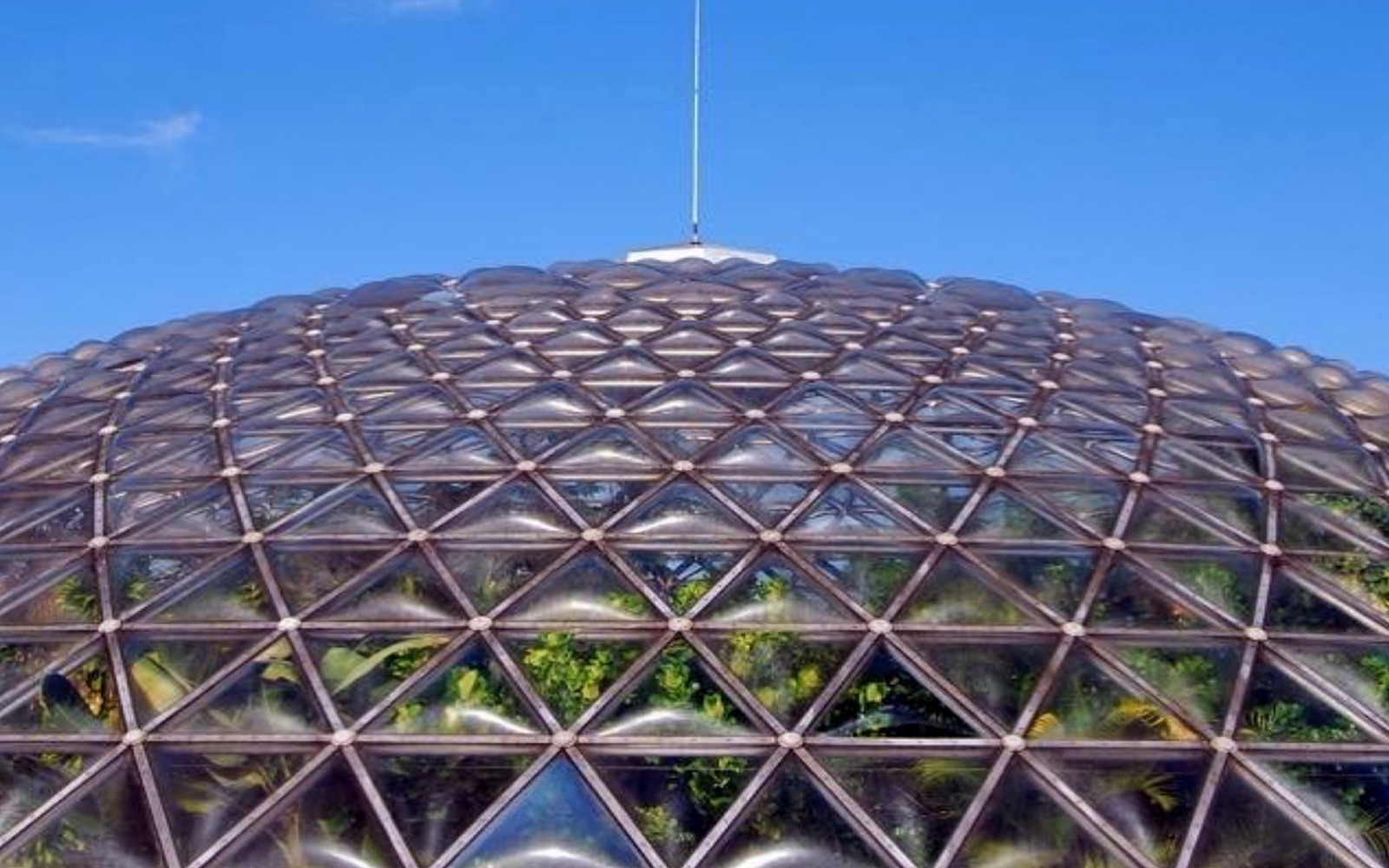
The Bloedel Conservatory
The Bloedel Conservatory is an aviary and conservatory located in Vancouver’s beautiful Queen Elizabeth Park. This beloved attraction houses more then 120 free-flying birds and 500 species of tropical plants in its unique temperature-controlled eco-system.
The conservatory is housed within a unique 16,386 square foot triodesic dome that contains three different climactic zones:
- Tropical
- Sub-tropical
- Desert
Each zone aims to replicate the ideal environment for hundreds of species of non-native plants and animals from all over the world to flourish.
You’ll find a whole flock of chatty parrots, cockatoos and macaws flying through the tropical trees and plants. So don’t be surprised if they come up and say hello!
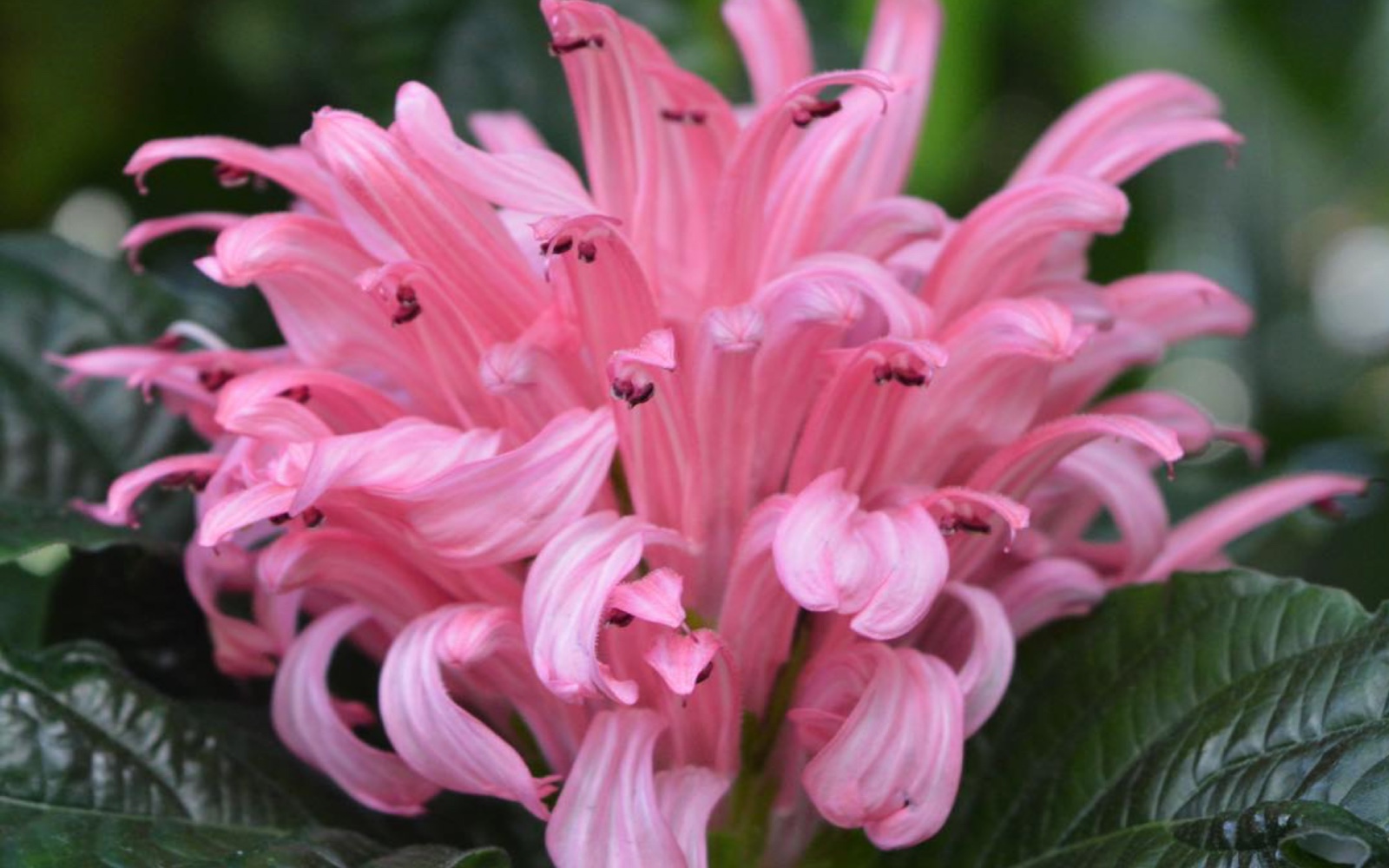
Bloedel Conservatory Plants
A visit to the Bloedel Conservatory is guaranteed to leave you with an increased appreciation for the incredible bio-diversity present near the earth’s equator. The facility contains over 500 different varieties of plants and flowers spread throughout its three climactic zones.
Unfortunately, many of these very eco-systems are amongst the most endangered on earth. With this in mind, the conservatory aims to invoke a sense of eco-responsibility in visitors.

Surely once you see the extraordinary beauty present you’ll leave with an increased understanding of the importance of habitat protection and conservation.
Here’s a quick look at what you can expect to see on your visit.

Tropical Rainforest Habitat
Tropical rainforest’s are home to the most diverse habitat anywhere on earth. In fact, a single hectare of Amazonian Rainforest can contain more species of plants and tress than the entire country of Canada.
And with the extraordinary diversity of species comes a veritable kaleidoscope of colours. Vivid yellows, pinks and purples can be found in the variant species of lilies, jasmines and gingers from rainforests all over the globe.
The eyes of gourmands will surely head to the incredible assortment of exotic fruits and spices, such as papayas, pineapples, coconuts and three different types of bananas.

Highlights
Nicknamed Uncle Fester, the infamous Indonesian corpse flower attracted over 17,000 visitors in one week in 2018. This aptly named flower blooms only once every 7-10 years. While doing so it emits a foul odour reminiscent of rotting meat in order to attract pollinators.
Coffee lovers should get quite the kick out of the beautiful arabica coffee plant from which 60% of the world’s coffee is derived. Watch the berries ripen from green to yellow and eventually to a deep red. These “cherries” are then picked and roasted before they end up in your morning espresso.
If you’d like to take a 125 million year glimpse into the past then be sure to check out the Mexican Horncone Cycad. This unassuming plant that is closely related to the palm tree dates back to the Mesozoic Era. It can be found just past the bamboo bridge.
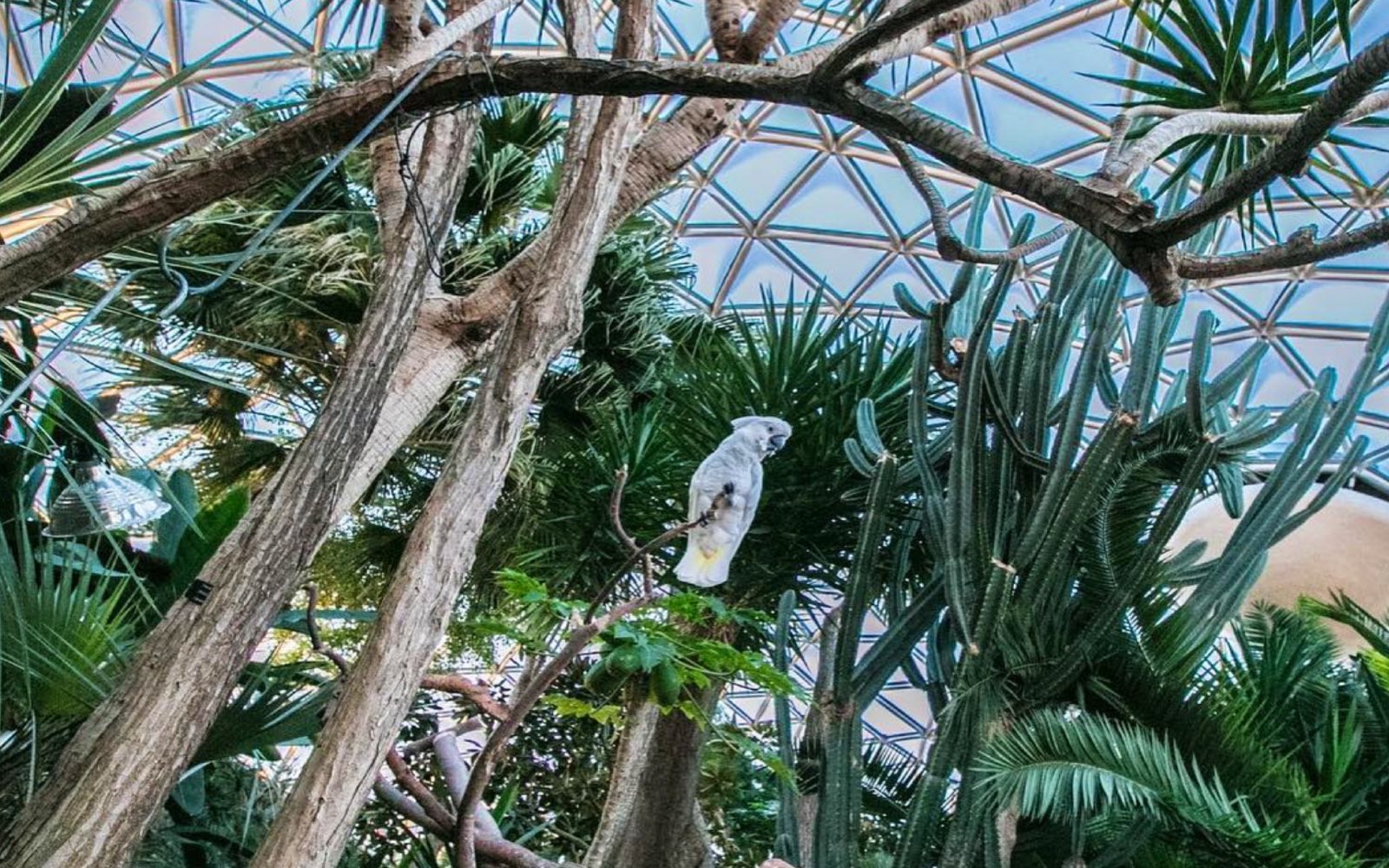
Sub-Tropical Habitat
The sub-tropical climactic zone contains brighter light and a lower degree of humidity. This makes it ideal for a massive variety of brightly coloured orchids that seemingly cover every shade of the rainbow.
The vivid begonias, bromeliads and azaleas are sure to catch the eye of visitors and the tropical birds a like.
The area’s backdrop is predominantly formed by banyan trees, Mediterranean palms and over 5 types of fig trees.
Highlights
The main attraction for most people is the endless variety of orchids. However, I enjoyed getting a look at the different types of fig trees on display.
Growing up in an Italian-Canadian family these delicious pearls of sweetness were always an important part of summer in Vancouver. Unfortunately, in our temperate climate we can only grow the admittedly inferior green ones.
One of the more peculiar trees on display is the conservatory’s big dragon tree. Native to the Canary Islands, these sub-tropical trees can take an amazing 10 years to grow just one-metre! But with a lifespan of over 600 years, they’re not in any hurry.
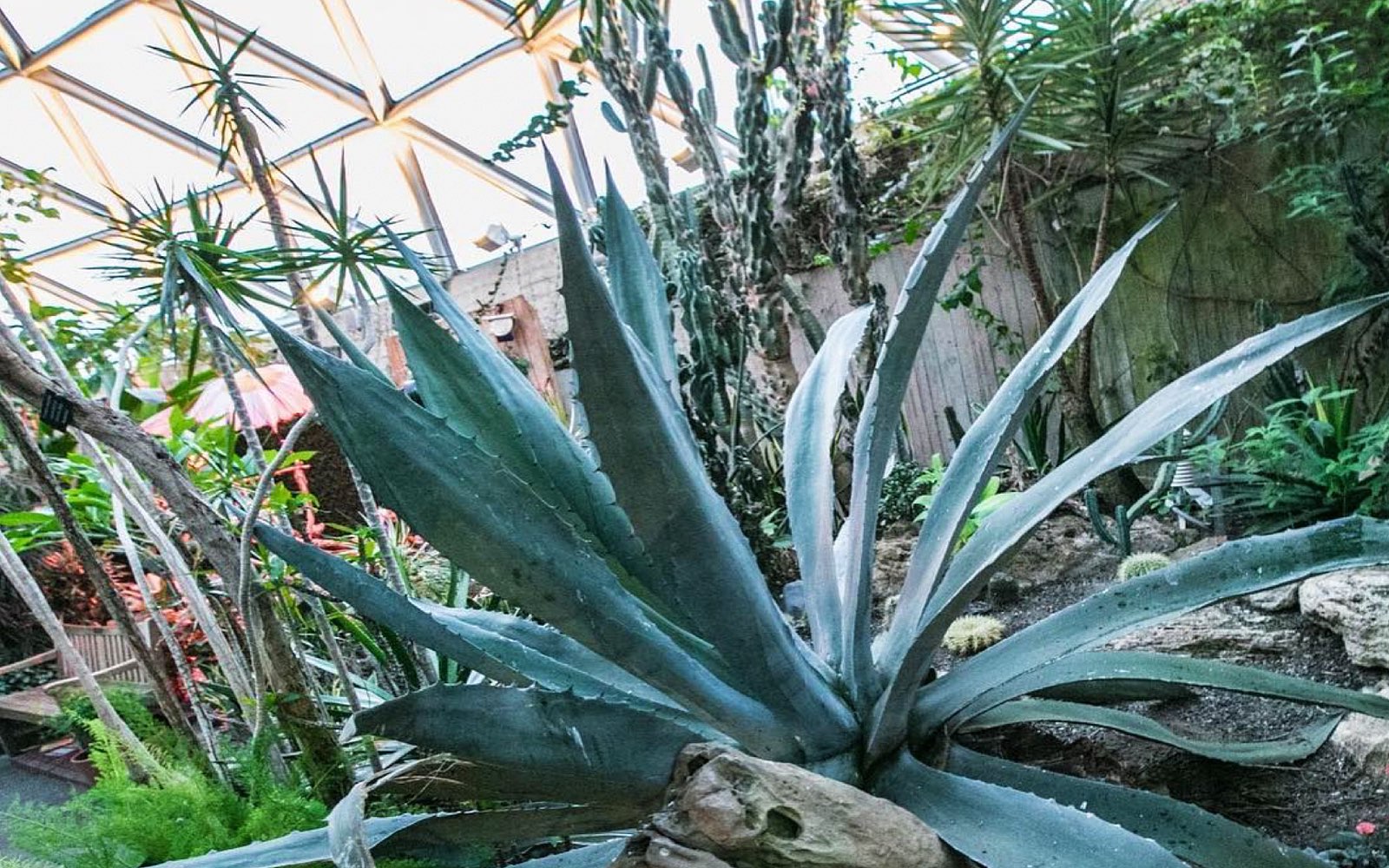
Desert Habitat
Home to very high temperatures, high humidity and little precipitation, deserts are far from an ideal environment for plants and animal life.
However, the hardy species that are present are a true testament to the beauty, durability and resiliency of mother nature. Desert lilies and marigolds prove that the environment isn’t as barren and lifeless as the name suggests.
Highlights
Cacti and succulents are the name of the game in the desert climactic zone. Tequila drinkers should enjoy having a glance at their favourite shot’s raw origins with the agave tequilana.
You can also enjoy another five species of cacti and the ever popular aloe vera plant.
Related: Best Time to Visit Vancouver
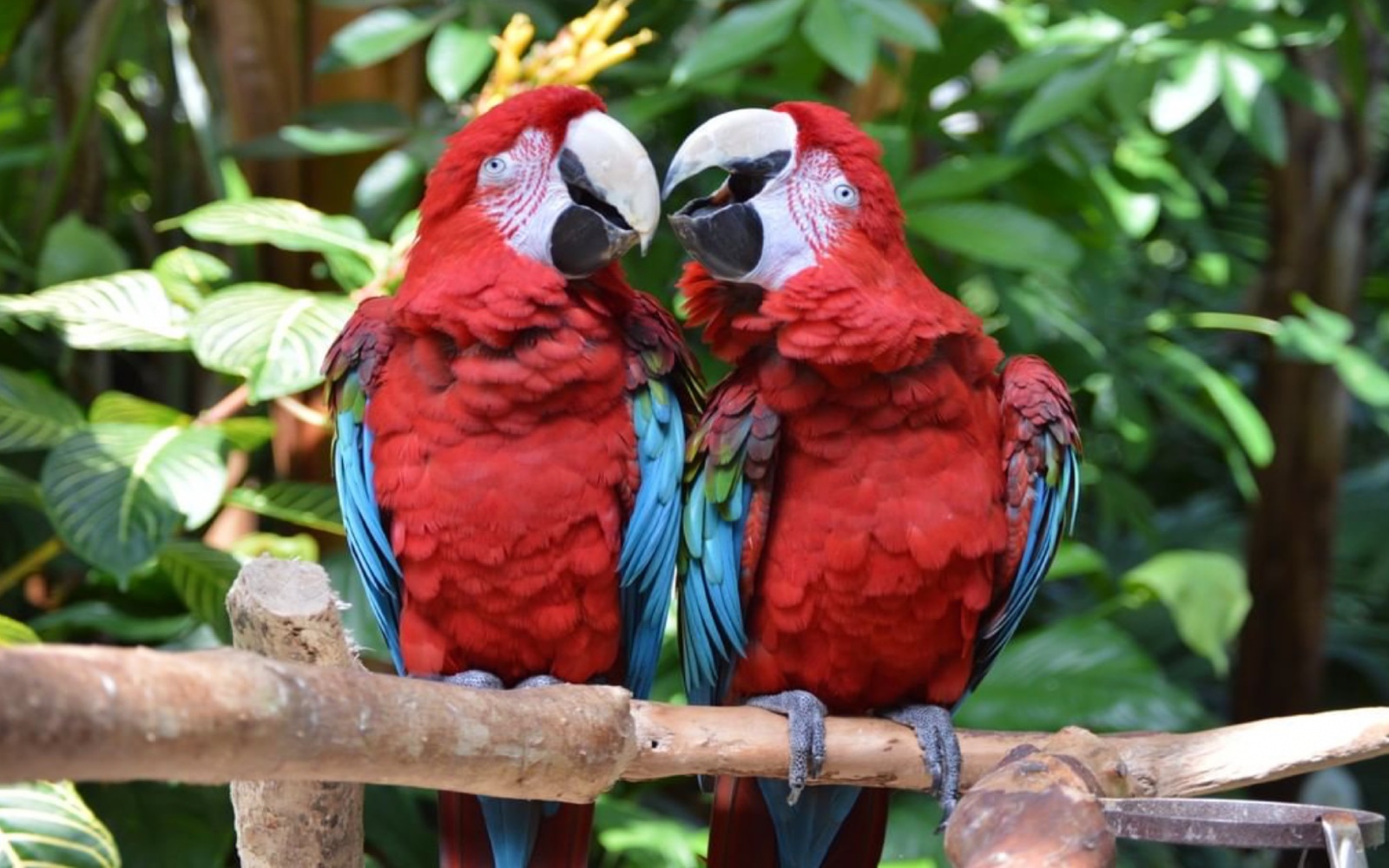
Bloedel Conservatory Animals
While the beauty of the tropical plants is indisputable, the clear highlight for most visitors will be the conservatory’s 120 free-flying exotic birds. You’ll encounter African parrots, brightly coloured macaws and chatty cockatoos making themselves at home in this lush tropical paradise.
Be sure to grab one of the printed guides at the entrance for a comprehensive list of the different species present in the conservatory. Then you and your family can keep your eyes peeled to try and identify as many of them as you can.
The larger birds will be quite easy to locate. However, the smaller species such as the canaries, turacos and finches might take a little more effort. So here’s a quick hint.
Animals have to make a living too. So try and locate the feeding area towards the back of the conservatory. Where there is food there will be birds!
Highlights
The birds are so lovable and entertaining that it’s difficult to pick just one. And indeed everyone is likely to leave with a favourite of their own.
The oldest bird at the conservatory is Casey, the 57 year-old yellow crowned parrot. Nearby you’ll likely encounter Monty, her princess parrot boyfriend. These two definitely make up the Bloedel Conservatory’s main power couple.
If you’re looking for pure entertainment then you’ll want to seek out Kramer, the moluccan cockatoo. Much like his Seinfeld counterpart Kramer is renown for his wit, loquaciousness and intelligence. In fact, he knows over 40 different phrases, can string together short sentences and even understands the concept of cause and effect.
Bloedel Conservatory Tickets
- Adults (19-64): $9.06
- Seniors (65+): $5.30
- Youth (13-18): $5.30
- Children (5-12): $3.78
- Children (0-5): Free
If you click through to our partners at Tiqets using the orange button, you can read Bloedel Conservatory reviews and get the best price online.
You’ll also be doing us a huge favour (at no extra cost to you) to help us cover costs and the thousands of hours we’ve put into creating this free resource.
*Children under 5 are free
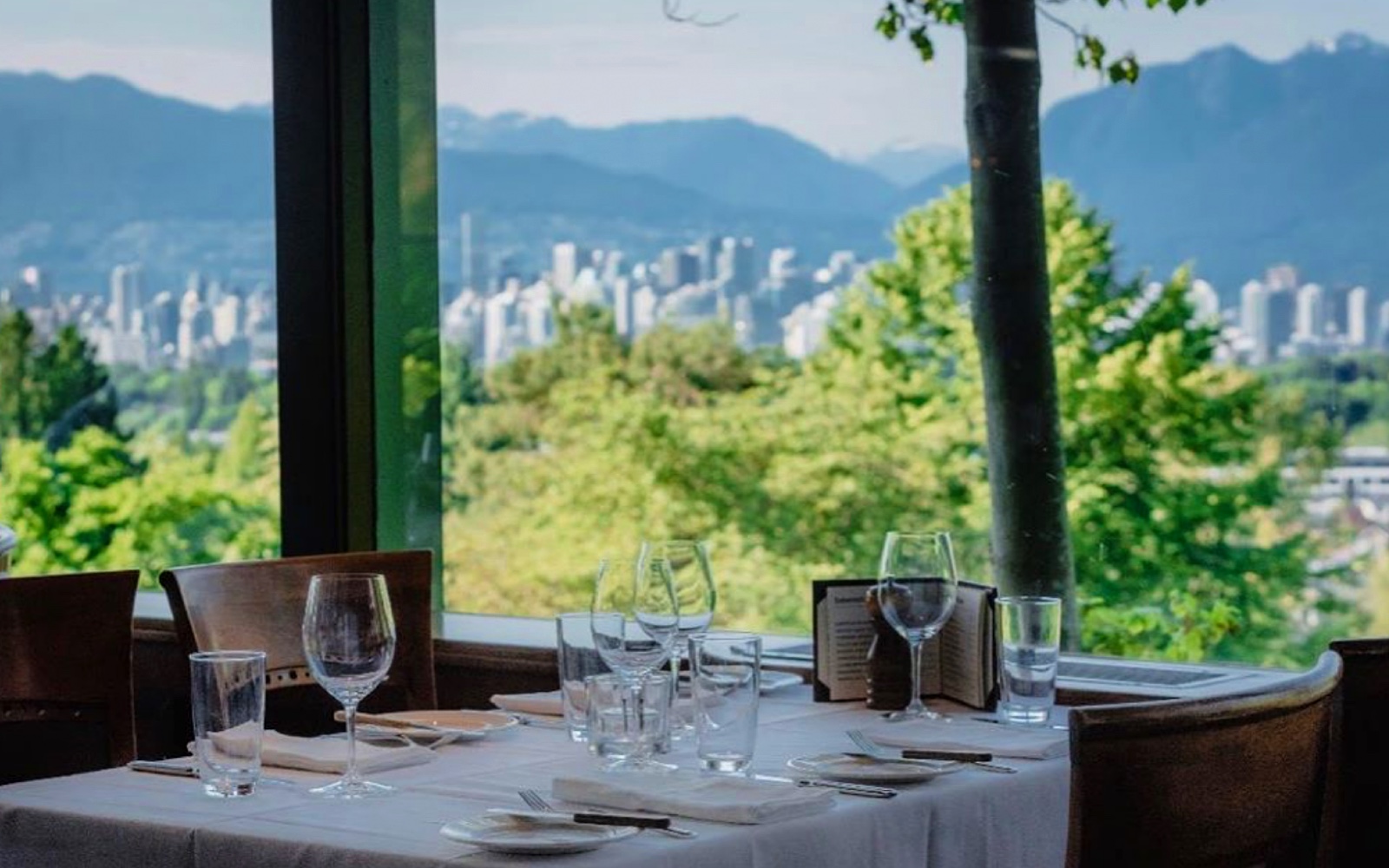
Bloedel Conservatory Amenities
The Conservatory Gift shop
The gift shop contains a variety of souvenirs, clothing, toys, and jewelry that serve to commemorate your visit to the conservatory and the City of Vancouver.
Bloedel Conservatory Food
You can find a small collection of coffee, tea, bottled refreshments, ice cream, and vending machine snacks available on-site.
Related: Best Vancouver Food Tours
Seasons in the Park
There is a fine dining restaurant located adjacent to the Bloedel Conservatory in Queen Elizabeth Park. Seasons in the Park offers fantastic views of Vancouver’s skyline and QE Park from its perch atop the highest point in Vancouver.
The legendary restaurant is famous for its fabulous patio and weekend brunches. I also highly recommend their $49 three-course prix fixe menus and Sunday roast dinners.
Bloedel Conservatory Hours
The Bloedel Conservatory is open daily year round with the exception of Christmas in Vancouver. It’s not the largest attraction, so you likely only need to allot 30-45 minutes for your visit.
However, visitors with a keen interest in botany or bird watching are known to spend much longer. So be sure to budget your time accordingly.
Hours of Operation
- Low Season (Nov-Mar)—10:00am-5:00pm
- Shoulder Season (Apr, Sep, Oct)—10:00am-6:00pm
- High Season (May-Aug)–10:00am-8:00pm
Bloedel Conservatory Directions
The Bloedel Conservatory is located In Queen Elizabeth Park right in the geographical centre of the city.
This makes it easily accessible from your downtown hotel or hostel via automobile or public transit.
Driving
QE Park is a simple 10 minute drive across the Cambie Street Bridge from Downtown Vancouver. For detailed directions from your place of lodging visit Google Maps.
You can find entrances at several sides of the park. For the Conservatory I’d recommend taking a left at the 33rd Avenue entrance that’s nearest to the attraction.
Parking
There is limited free parking along the road that forms the park’s periphery and on 33rd Avenue. Unfortunately, spots can be hard to come by during peak hours.
So if you don’t get lucky there are several pay parking lots near the conservatory. The rates are as follows:
Peak Season (May 1 to September 30)
- $3.60 per hour
- $13.30 per day
Low Season (October 1 to April 30)
- $2.60 per hour
- $7.10 per day
Public Transit
The Conservatory can be easily reached from downtown via the Skytrain and the Coast Mountain bus service.
Skytrain
Enter any downtown station serving the Canada Line (Waterfront, City-Centre or Yaletown). Pay a one-zone fare and board a Southbound train for Richmond-Brighouse or YVR.
Stay aboard until you reach Oakridge-41st Station. This will be the 6th stop from Waterfront. QE Park will be located a 10-minute walk South along Cambie Street.
Bus
Alternatively, if you’d like to avoid the walk you can opt to take a bus in tandem with the Canada Line. Follow the steps above and instead exit at Broadway-City Hall Station.
Exit the station and locate the Bay #3 stop on the Westside of Cambie just past 10th Avenue. Grab the #15-Cambie bus and proceed South until 33rd Avenue. QE park will be located on your left-hand side.
Before you attempt to navigate the Vancouver public transportation system be sure to check out our Vancouver public transport mega guide.
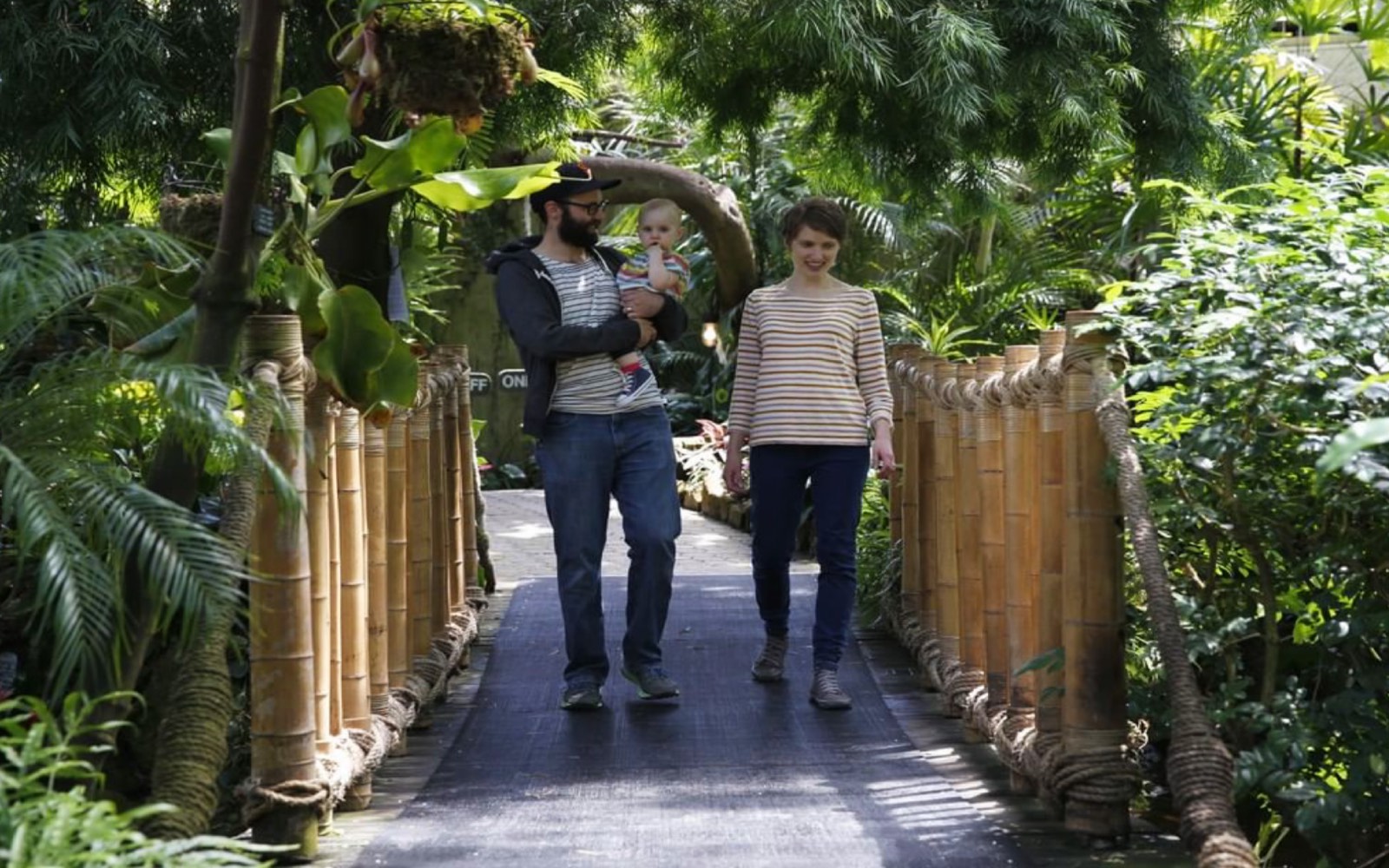
Bloedel Conservatory Visitor Tips
1) Reserve Your Tickets Online
The Bloedel Conservatory isn’t the largest attraction. However, it’s still quite busy during high season. As a result, you may encounter decent sized queues upon your arrival.
The safest way to avoid this is to purchase your tickets in advance online.
2) Dress in Layers
No matter how gloomy the Vancouver may be outdoors don’t forget that you’ll be taking a brief visit to what is basically a tropical rainforest. It can get absolutely sweltering if you end up stuck in a heavy sweater or sweatshirt.
3) Grab Your Printed Guide Upon Entry
The printed guide available at the entrance will outline the numerous species of birds that are present in the conservatory. This will provide a little more structure to your self-guided tour as learn about the features of the various birds and pick out your favourites.
I like to do 2-3 tours around the circuit to try and see as many of the birds as possible.
4) Seek Out the Roaming Docents
While there are no guided tours on offer, the conservatory has a number of roaming docents present between the hours of 1:00-4:00 on weekdays and 10:00-4:00 on weekends and holidays.
These individuals will be happy to answer any questions concerning the plants and animals present on-site.
5) Explore Neighbouring QE Park
The Bloedel Conservatory is located in what’s likely Vancouver’s second best park (the title goes to Stanley Park). Inaugurated by Queen Elizabeth herself, QE park is famous for its beautiful gardens and wonderful viewpoints of downtown and the North Shore Mountains.
So after your visit be sure to take a few minutes to explore and take in the sights of one of Vancouver’s most instagrammable sites.
6) Visit in Tandem with VanDusen Garden
If you’d like to see even more incredible flowers an trees then I recommend pairing your visit with a trip to nearby VanDusen Garden.
This 22 hectares (55 acres) botanical garden has an extensive collection of native British Columbia (Northwest Coast) foliage in addition to plants from all over the globe.
Bloedel Conservatory FAQ
Where is the Bloedel Conservatory?
The Bloedel Conservatory is located in Queen Elizabeth Park at the geographical centre and highest point in Vancouver about 15 minutes from downtown.
How to get to the Bloedel Conservatory?
The Bloedel Conservatory can be reached from Downtown Vancouver via the Skytrain’s Canada Line. Take the train to Oakridge-41st Station and then walk ten minutes South along Cambie Street.
Alternatively to avoid the walk you can get of at Broadway-City Hall Station and grab the #15 Cambie bus from the East side of Cambie street. Stay on the bus until you reach 33rd avenue and the conservatory will be on the Eastside of the street.
What is the Bloedel Conservatory?
The Bloedel Conservatory is a tropical conservatory and aviary that is home to over 500 species of plants and 120 free-flying birds in its three temperature controlled eco-systems.
Visiting the Bloedel Conservatory?
Well that’s about all I can muster on the Bloedel Conservatory. I hope this article formed a true parrot-dime shift in your Vancouver itinerary.
And as always, if you feel I missed anything or you have any additional questions don’t be afraid to hit us up on the Vancouver Planner Facebook page or in the comments below.
We’re always here for all your Vancouver based travel needs.

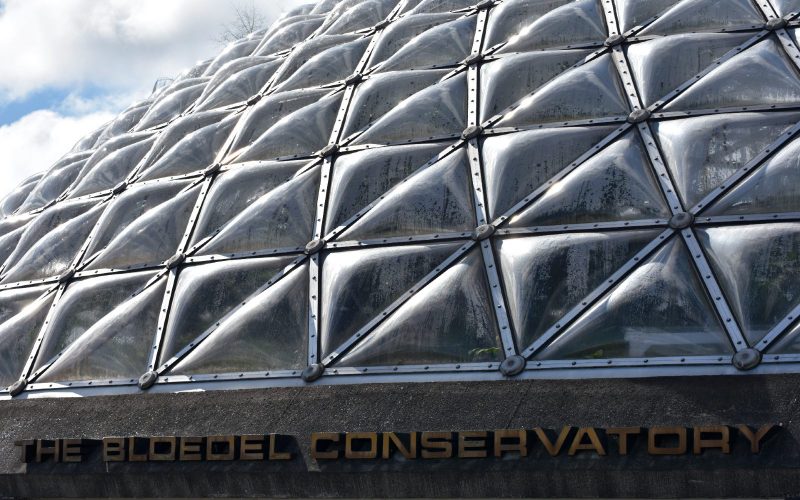
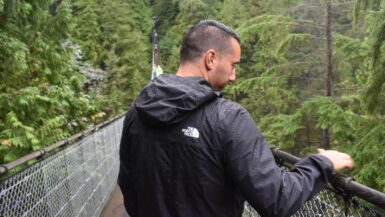
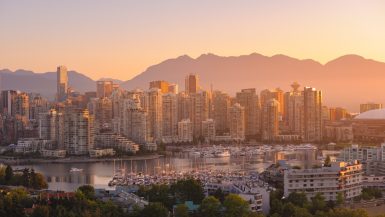

Leave a reply